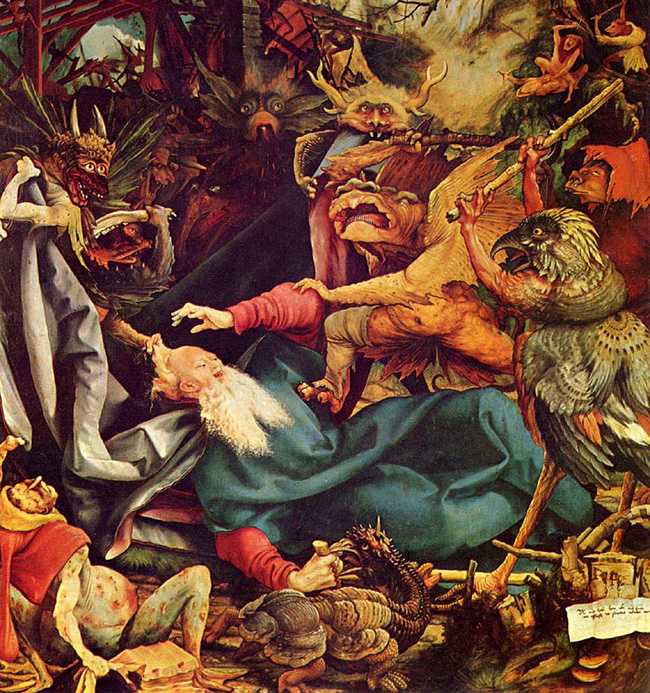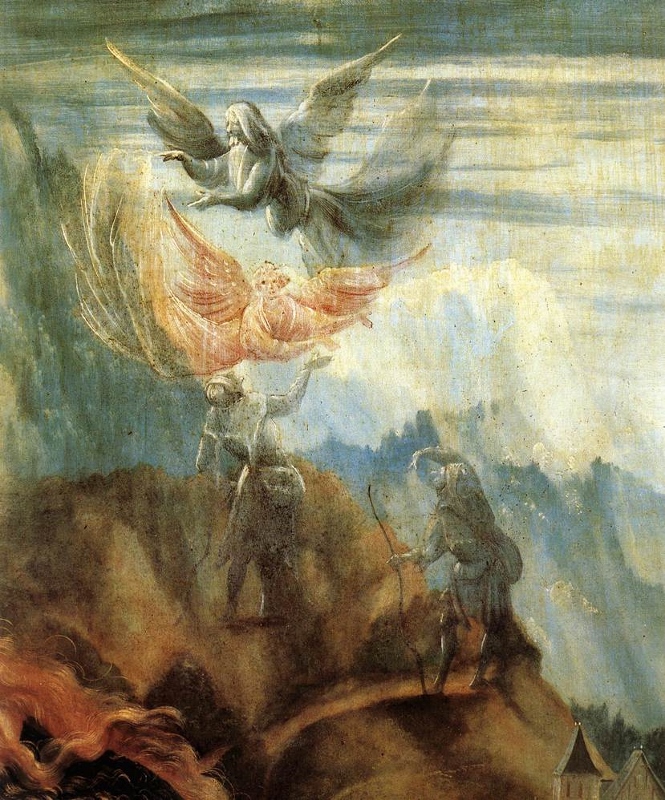One of the 20th Century’s most influential composers, Paul Hindemith created the neo-classical-folk-inspired symphony Mathis der Maler, based on the life of the mysterious 16th Century painter Matthias Grunewald, whose masterpiece associated Saint Anthony and the Virgin Mary with the miraculous cure of the epidemic skin disease called St. Anthony’s Fire. Stephen Vessels curates the discussion on Classical Music rarities.


From Stephen Vessels
Paul Hindemith, 1895 – 1963, German composer of 11 operas, 5 ballets, 7 symphonies, 20 concertos, and a legion of other orchestral, chamber, vocal and instrumental works. He could play every instrument in the symphony orchestra and was exceptionally generous in composing instrumental works for all of them. The Nazis condemned his work as “degenerate” and “Jewish-tainted;” Joseph Goebbels called him an “atonal noisemaker.”
Hindemith survived that criticism to live an extraordinary and accomplished life. His stirring, solemn Mathis der Maler (Mathis the Painter, 1938) Symphony was derived from his opera of the same name, which concerns the 16th century painter, Matthias Grünewald. In my teens I was attracted to a vinyl recording of the symphony by its cover, which showed a detail of Grünewald’s “Temptation of St. Anthony” from the Isenheim Altarpiece. I still have that recording. It forever changed the way I heard music.
The Isenheim Altarpiece, painted by Matthias Grünewald 500 years ago, is regarded by scholars and critics as a sublime artistic creation, an icon of Western civilization like Leonardo da Vinci’s Mona Lisa or Michelangelo’s Sistine Chapel. Yet, in all of last year, barely 250,000 people came to the Unterlinden Museum in the French Alsatian town of Colmar to look at this masterpiece of Northern Renaissance art. — Stanley Meisler, Smithsonian Magazine

Watch this video on YouTube
Paul Hindemith: Mathis der Maler Symphony (1933-1934). Gustav Mahler Jungendorchester, Herbert Blomstedt, London.
Grünewald painted the panels for the the monks of Saint Anthony, venerated as a healer and sufferer who pioneered the idea of monasticism in Christianity. The Antonite order operated the hospital in Isenheim largely for those afflicted by a disease known then as “Saint Anthony’s fire,” (now rare and called “ergotism”) struck down many in periodic epidemics during the Middle Ages. Grünewald’s altarpiece played an important mystical and psychological role in the Isenheim treatment program. — Stanley Meisler
STORY: Pablo Picasso: Dangerous Art and Political Posturing in Paris


The Temptation of St. Anthony must have given Grunewald enormous pleasure, for this picture of a demons’ sabbath waging war on the good monk called for the most convulsive attitudes, the most extravagant forms and the most vehement colours. Nor was he slow to grasp this opportunity of exploiting the droller side of the supernatural. But if there is extraordinary life and colour in the Temptation, there is also utter confusion. Indeed, the picture is in such a tangle that it is impossible to distinguish between the limbs of the various devils, and one would be hard put to it to say which paw or wing beating or scratching the Saint belonged to which animal or bird.
It is easy to see why Grünewald’s name, unlike the names of Holbein, Cranach and Dürer, is not to be found in the account-books or the records of commissions left by emperors and princes. His pestiferous Christ would have offended the taste of the courts; he could only be understood by the sick, the unhappy and the monks, by the suffering members of Christ. — J.-K. Huysmans from Trois Primitifs
Updated 23 July 2023









Pingback: The Real Imagination of Artist Francis Bacon | WilderUtopia.com
Pingback: Gershwin's Kaleidoscope of America in 'Rhapsody in Blue'